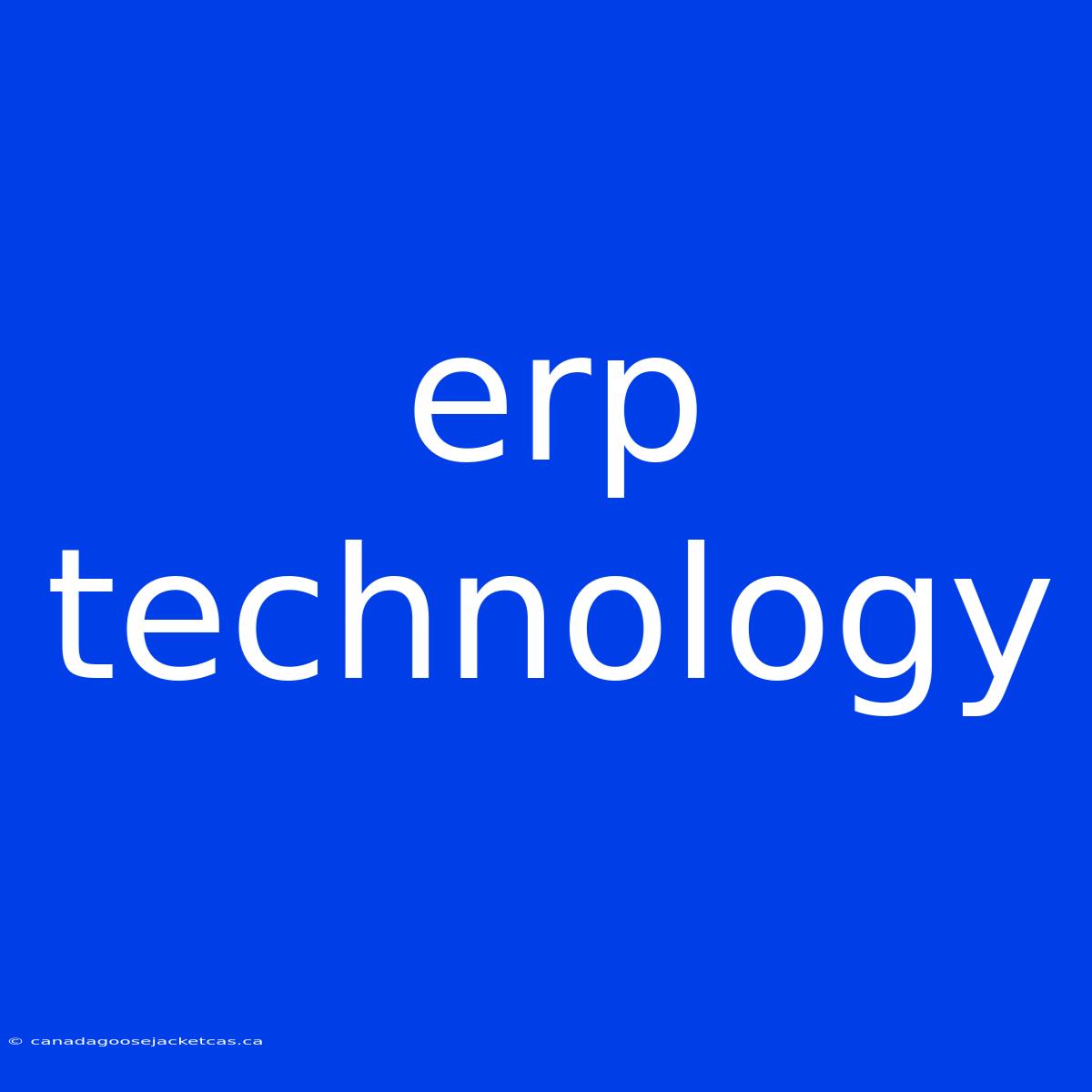ERP Technology: Unveiling the Powerhouse of Business Operations
What is ERP technology, and why is it so crucial? ERP technology stands as the backbone of modern businesses, integrating and streamlining various operational functions for unparalleled efficiency.
Editor Note: This article delves into the intricacies of ERP technology and its critical role in driving business success.
Understanding the complexities of ERP technology is vital for any organization aiming to optimize its operations. It offers a unified platform for managing core processes like finance, human resources, supply chain, and customer relations, eliminating siloed data and facilitating real-time insights for informed decision-making.
Our analysis involved extensive research, examining industry trends, best practices, and leading ERP solutions to provide a comprehensive guide for businesses seeking to harness the transformative power of ERP technology.
Key Takeaways of ERP Technology
| Aspect | Description |
|---|---|
| Integration | Unifies disparate systems, eliminating data silos and improving information flow. |
| Automation | Automates repetitive tasks, freeing up valuable time for strategic initiatives. |
| Real-time Visibility | Provides real-time insights into key performance indicators (KPIs) for data-driven decisions. |
| Scalability | Adapts to evolving business needs, accommodating growth and expansion seamlessly. |
| Cost Reduction | Streamlines processes, reduces operational costs, and enhances profitability. |
ERP Technology: A Deeper Dive
Integration
- Centralized Data Hub: ERP systems act as a central data repository, connecting various departments and functions.
- Enhanced Collaboration: Break down communication barriers and foster seamless collaboration among teams.
- Eliminating Redundancy: Reduce duplicate data entry and eliminate errors associated with manual data handling.
Automation
- Streamlined Processes: Automates repetitive tasks, such as invoice processing, payroll, and inventory management.
- Improved Efficiency: Reduces manual effort and time spent on mundane tasks, freeing up staff for higher-value activities.
- Reduced Errors: Minimizes human error and ensures greater accuracy in data entry and processing.
Real-time Visibility
- Data-Driven Insights: Provides access to real-time data on key performance indicators (KPIs) for strategic decision-making.
- Proactive Problem Solving: Identifies potential bottlenecks or issues early on, enabling prompt corrective action.
- Enhanced Reporting: Generates detailed reports and dashboards for comprehensive performance analysis.
Scalability
- Growth Accommodation: Adapts to evolving business needs, accommodating growth and expansion seamlessly.
- Future-Proofing: Prepares businesses for future challenges and opportunities, ensuring sustainable growth.
- Flexible Configuration: Allows customization to meet specific industry requirements and business models.
Cost Reduction
- Streamlined Processes: Reduces operational costs through process optimization and automation.
- Improved Inventory Management: Minimizes overstocking and understocking, reducing inventory costs.
- Enhanced Productivity: Increases employee productivity through automation and improved information flow.
Conclusion
ERP technology is a game-changer for businesses of all sizes. Its ability to integrate, automate, provide real-time visibility, scale with growth, and reduce costs makes it a vital tool for achieving operational excellence and driving business success. Organizations that leverage ERP technology effectively gain a competitive advantage by optimizing their operations, improving efficiency, and making data-driven decisions that lead to increased profitability and sustained growth.

